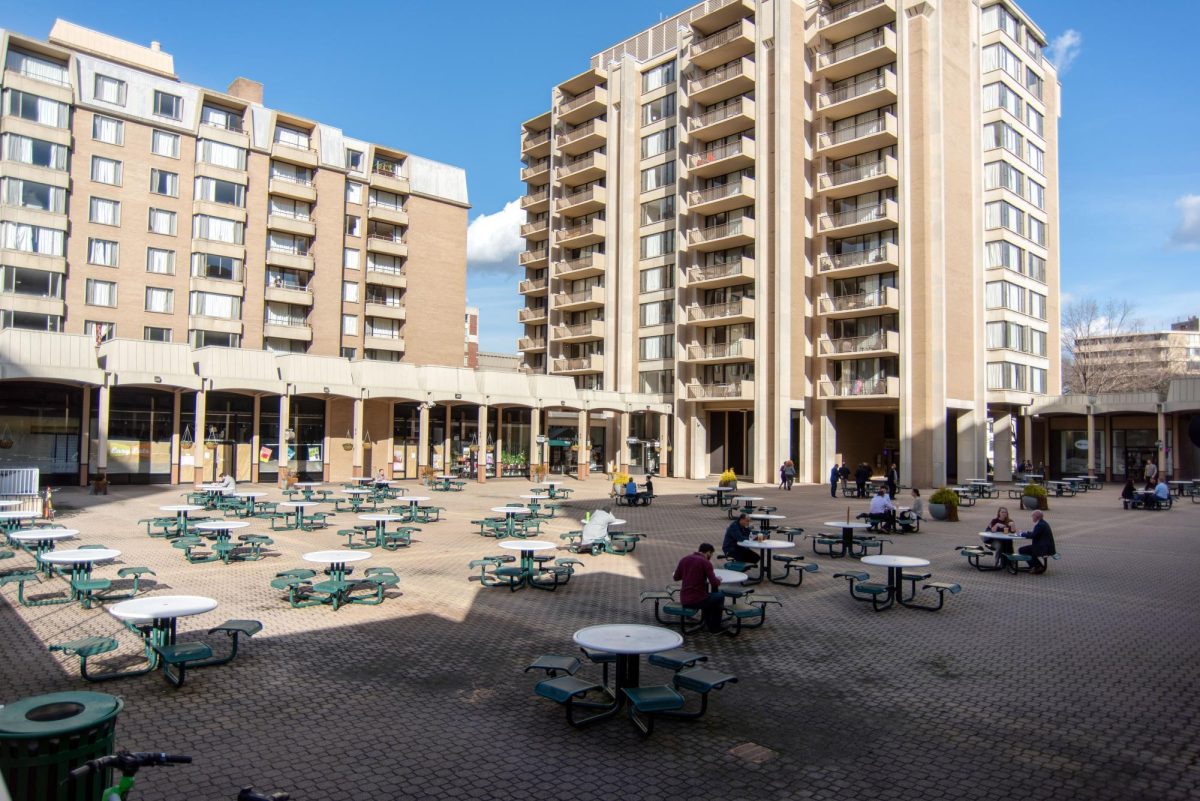Businesses in the Watergate complex and Columbia Plaza have noticed a decline in foot traffic since the pandemic and hope to see greater support from the city.
A study commissioned by the D.C. Department of Small and Local Business Development released last month found that 63 percent of businesses in the Foggy Bottom-West End area report sales below pre-pandemic levels, with particular declines in foot traffic at the Watergate and Columbia Plaza. Several businesses in the area seek additional support in increasing foot traffic and improving security in the area, especially after the pandemic.
The study recommended the implementation of a DC Main Streets Program in the Foggy Bottom-West End area, which supports retail in the area by recruiting businesses to come to the area and improving buildings and streetscapes. To date, there are 28 Main Streets programs in the District.
The study further recommends that the Foggy Bottom Association, a neighborhood group, head efforts to run a Main Streets program because of its “capacity, experience and local presence.”
Five business owners in the area, although not initially aware of this plan being implemented, said they support initiatives like the Main Streets program that would help increase foot traffic in the area.
Dale Johnson, the owner of Watergate Gallery & Frame Design, said she has run the location for almost 40 years. She said foot traffic at the Watergate has declined over the years and the management of the area has been subpar.
“The Watergate used to be such a vibrant place,” Johnson said. “It was a lot of fun to be here with a lot of stuff going on.”
Johnson said she had heard of the Main Streets program, and she would appreciate any community efforts to support local businesses but was unsure how the community could be involved.
“That would be wonderful if there was a way that they could figure out how to do that, but it’s basically my landlord who takes no interest,” Johnson said.
Johnson said she works with the Foggy Bottom Association to put on a biennial sculpture exhibition. Arts in Foggy Bottom, which puts on the event, won the District of Columbia Mayor’s Arts Award for Innovation in the Arts.
“I don’t know how much we can expect everybody to do all that work and volunteer time,” Johnson said. “These are professional people.”
Sunil Sehgal, the owner of Watergate Vintners & Spirits, said he stayed in business by delivering his goods during the pandemic, but now that the shutdown is over, people are ordering fewer deliveries. He said fewer tourists travel to his area since the pandemic.
“People are not traveling a lot more, and therefore traffic has decreased,” Sehgal said.
Sehgal said the Watergate businesses and residents support one another, but the city has not been much help. He said that during the Jan. 6 insurrection on the Capitol building, residents came down and helped clean up the Watergate’s broken windows.
“This complex is a community, and the community rallies together in a lot of different ways,” Sehgal said.
Sehgal said he would like to see additional security measures in the area, as people frequently will walk in and steal products. Twenty-four percent of the businesses surveyed in the feasibility study expressed a desire for assistance with security and vagrancy, but the Main Streets program would not centrally address these issues.
“That was rampant and continues to be a concern,” Sehgal said
Sehgal said the complex could also improve accessibility, as some of his customers are disabled and struggle to access his store when the escalators are turned off. He said residents and customers also frequently complain about the rat population in the area.
Sehgal said the FBA listed his store as a preferred merchant on their website, and he participates in the discount program for members of the association.
“Anything that supports local businesses, I’m all for it,” Sehgal said.
The owner of Casey’s Coffee, John Lee, said more than 90 percent of his customers work in the State Department, so he tailors his hours to fit theirs.
“When they’re open we’re open,” Lee said. “When they’re closed, we’re closed.”
Frederick Schwartz, who has lived in the Watergate since 1978, said the plaza used to host high-end delis and stores like Cartier, Yves Saint Laurent and Gucci. He said the wealthy shoppers who used to frequent these shops have left, preferring areas like Downtown D.C.
“People think that if they make the retail area pretty or they put up signs that it’s going to make a difference, but it’s not going to make a difference because there’s no foot traffic there,” Schwartz said. “It has to be a destination, and it isn’t a destination now.”
Schwartz said the Foggy Bottom area could serve as an arts district, especially with its proximity to the University, the Kennedy Center and the biennial sculpture exhibition.
“There’s a built-in audience who might be interested in the arts,” Schwartz said.
Fiona Bork contributed reporting.





